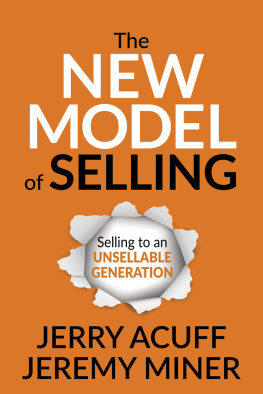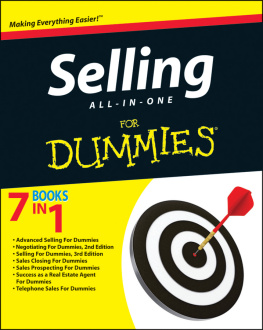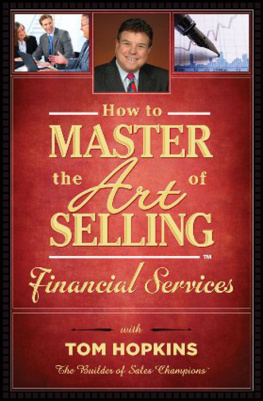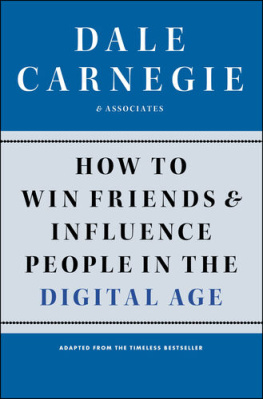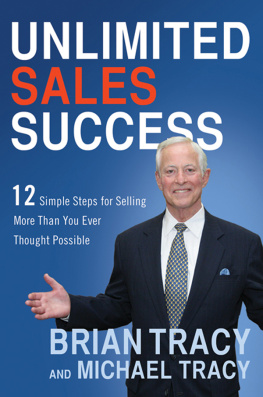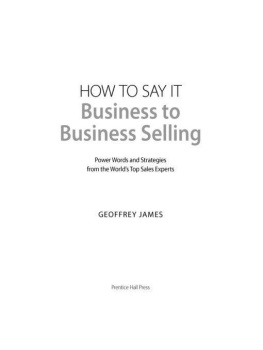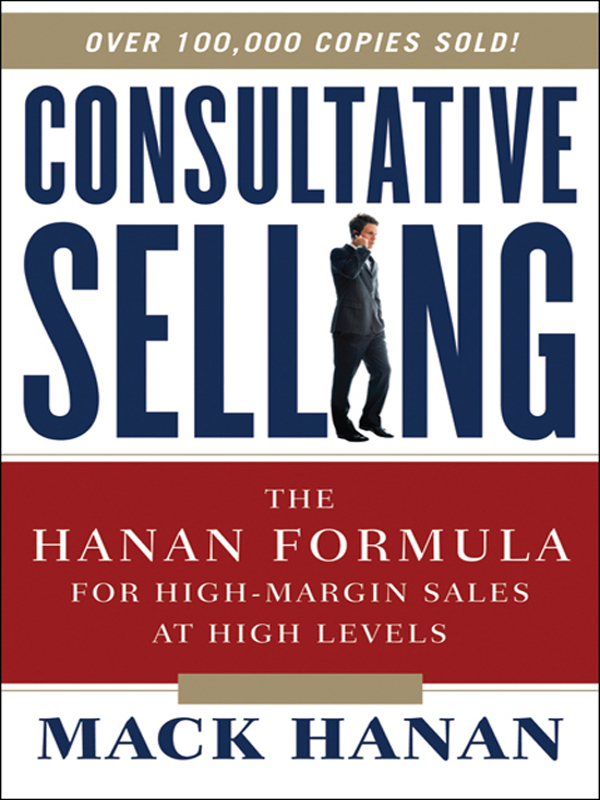CONSULTATIVE
SELLING TM
Eighth Edition
The Hanan Formula
for High-Margin Sales
at High Levels
Mack Hanan

Bulk discounts available. For details visit:
www.amacombooks.org/go/specialsales
Or contact special sales:
Phone: 800-250-5308
Email:specialsls@amanet.org
View all the AMACOM titles at: www.amacombooks.org
This publication is designed to provide accurate and authoritative information in regard to the subject matter covered. It is sold with the understanding that the publisher is not engaged in rendering legal, accounting, or other professional service. If legal advice or other expert assistance is required, the services of a competent professional person should be sought.
ISBN: 978-0-8144-1618-1 (eBook)
Library of Congress Cataloging-in-Publication Data
Hanan, Mack.
Consultative selling : the Hanan formula for high-margin sales at high levels / Mack Hanan.8th ed.
p. cm.
Includes index.
ISBN-13: 978-0-8144-1617-4
ISBN-10: 0-8144-1617-9
1. Selling. 2. SellingKey accounts. I. Title.
HF5438.25.H345 2011
658.85dc22
2010036209
2011 Mack Hanan.
All rights reserved.
This publication may not be reproduced, stored in a retrieval system, or transmitted in whole or in part, in any form or by any means, electronic, mechanical, photocopying, recording, or otherwise, without the prior written permission of AMACOM, a division of American Management Association, 1601 Broadway, New York, NY 10019
About AMA
American Management Association (www.amanet.org) is a world leader in talent development, advancing the skills of individuals to drive business success. Our mission is to support the goals of individuals and organizations through a complete range of products and services, including classroom and virtual seminars, webcasts, webinars, podcasts, conferences, corporate and government solutions, business books and research. AMAs approach to improving performance combines experiential learninglearning through doingwith opportunities for ongoing professional growth at every step of ones career journey.
Printing number
10 9 8 7 6 5 4 3 2 1
Information about External Hyperlinks in this ebook
Please note that footnotes in this ebook may contain hyperlinks to external websites as part of bibliographic citations. These hyperlinks have not been activated by the publisher, who cannot verify the accuracy of these links beyond the date of publication.
To my partners,
James Cribbin
and
Herman Heiser,
who set out with me on a mission to convert the sales function into a delivery system of continuous new value for its customers, and who, along the way, enriched me with the value of their refusal to settle for anything less than the continuous improvement of our own standard of performance.
CONTENTS
A PERSONAL NOTE
FROM THE AUTHOR
Chief executives who ask me, What do I need you for? have learned that they need me to equip their sales forces with an answer to that same question when it is asked by their own customers.
In an era in which customers control the way they want to be sold and, by doing so, have superseded their suppliers pretensions of account control; in which products and services, however new, are likely to enter their markets as instant commodities; in which margins are the reward for improving a customers profits rather than for improving your products or services; either you never leave home without new competitive advantages to bring to a customer or you stay in the car.
Customer managers at all levels, even technically trained managers in R&D, engineering, and IT, are getting smarter about their businesses, not just their technologies. In the words of one chief information officer (CIO):
When one of our typical suppliers comes in, its always some account manager with a classic product-based pitch. Thats their comfort zone. Theyre just not prepared to say, Lets talk about where your business is going, and heres how we can help you meet your goals. Maybe their top management can talk this way, but I never see them. They never see me either, so they have no concept of what my management is telling me I have to start paying attention to. Somebody says, Hes in technology, so go talk technology to him. But thats not really where Im at anymore.
Todays account managersno longer Arthur Millers road warrior, who was out there with a suitcase and a smilecarry improved profits, not products, in their bag. Theirs is not the gift of gab but the greatest gift of all: being able to help customers grow their business so that the consultative sellers business can be grown by high-margin sales in return.
Sales and R&D share a common denominator. They are the most change-resistant of all business functions, retaining their cost-ineffectiveness generation after generation and passing it along from one corporate reorganization to another. Sales managers manage the way they themselves were managed. Sales representatives sell against competitors rather than for the best interests of their customers. A seller who last sold 20 years ago could come back to work in most companies today.
High technology start-ups based on never-before-seen sciences sell with Rust Belt strategies. Oligarchic industries composed of three identical competitors sell identical products in identical ways at identical price points to identical customers.
3Ms reprographics business was a replica of the businesses of Kodak and DuPont. As in most oligarchies, two competitors could have been profitable. The third supplier, no matter which one it was, adulterated the earnings of all three of them. No one was willing to exit the business and leave the residual profits for the survivors. No one wanted to change sales strategies either until 3M, with a what-do-we-have-to-lose indifference, stopped selling cost-plus printing plates and started selling the value added to a printers revenues by assuring on-time shipments of customer advertising materials.
Union Carbide was a member of a chemicals oligarchy. The 20 percent of its products that were called specialty chemicals carried the other 80 percent of building-block commodity chemicals. Specialty chemicals could command high margins not because no competitor could make them, but because their customers could apply them to make high-margin products of their own. When Union Carbide recognized what it was that made its specialty chemicals specialthe applications expertise of its sales consultants, not a formulation of chemical ingredientsit was able to add even more to its customers value and, as a result, to its own margins.
Dow Chemical could have used Union Carbide as a model. But it had trouble turning around the Queen Mary of its sales strategy to sell the customer dollars that came out of its applications instead of the chemical ingredientsthe same ingredients that its fellow oligarchs usedthat went into its products. Until Union Carbide changed to a consultative strategy, Dow would not change. Differentiation was seen as a risk instead of a competitive advantage. Even when Union Carbide changed, Dow could still not turn the Queen Mary around because anything Union Carbide did was not The Dow Way, and besides, Union Carbide could be wrong.



